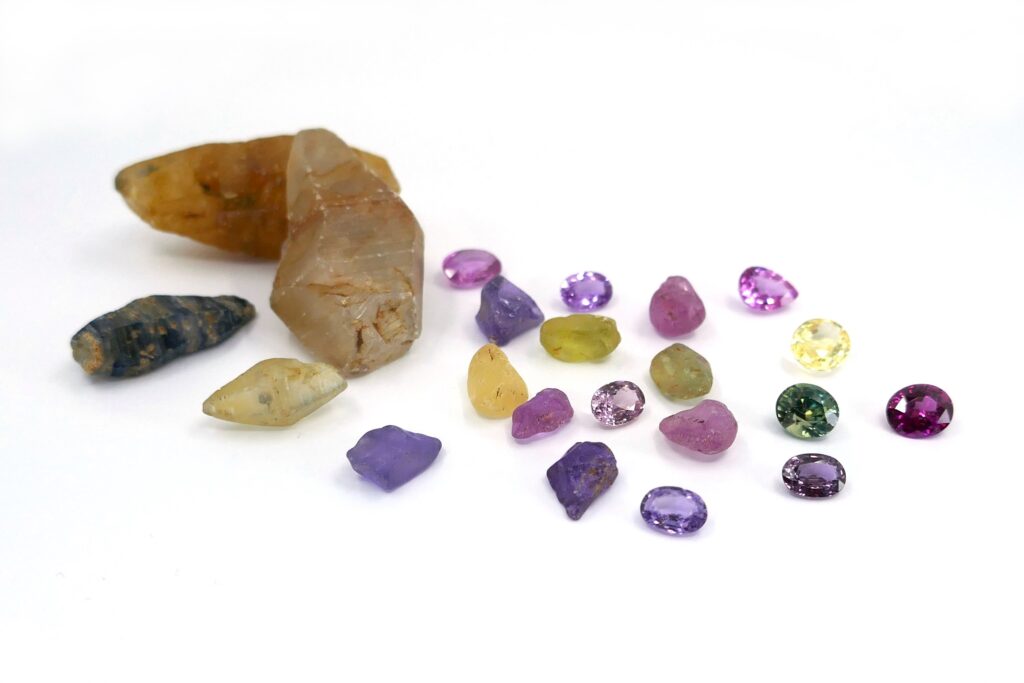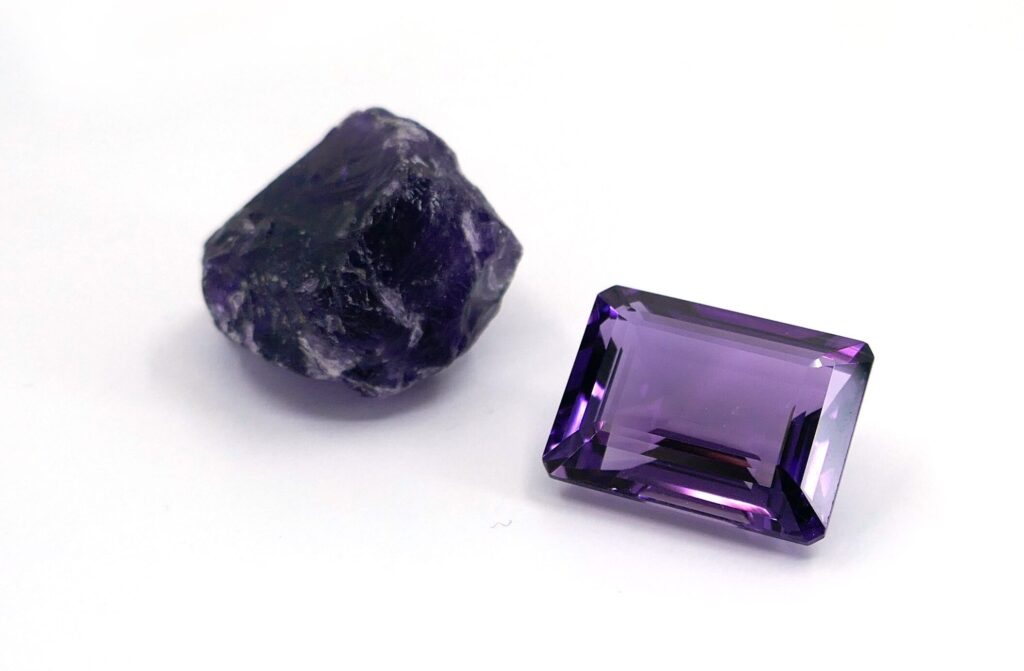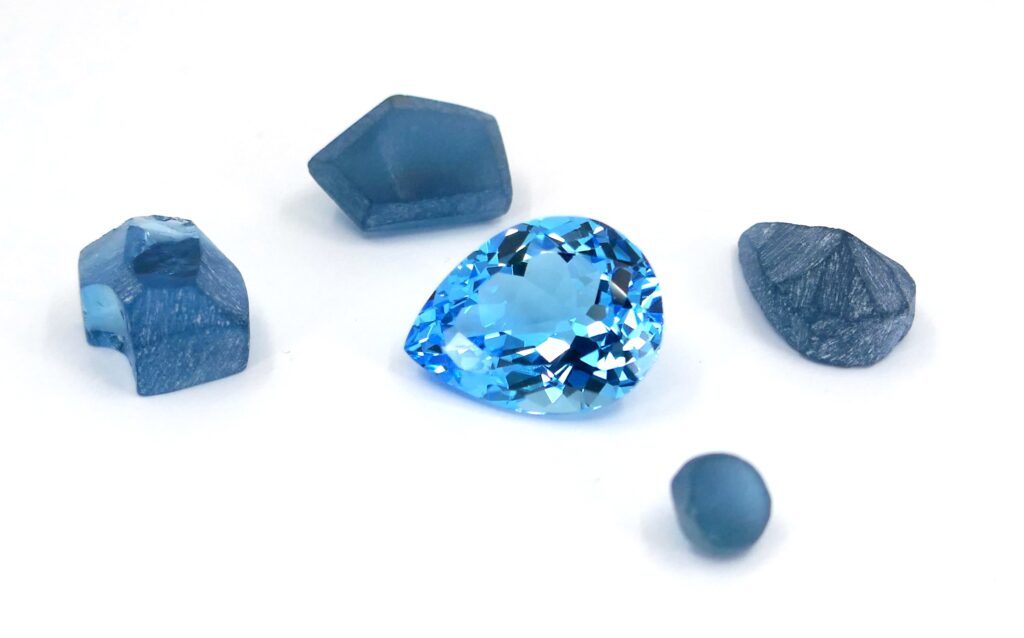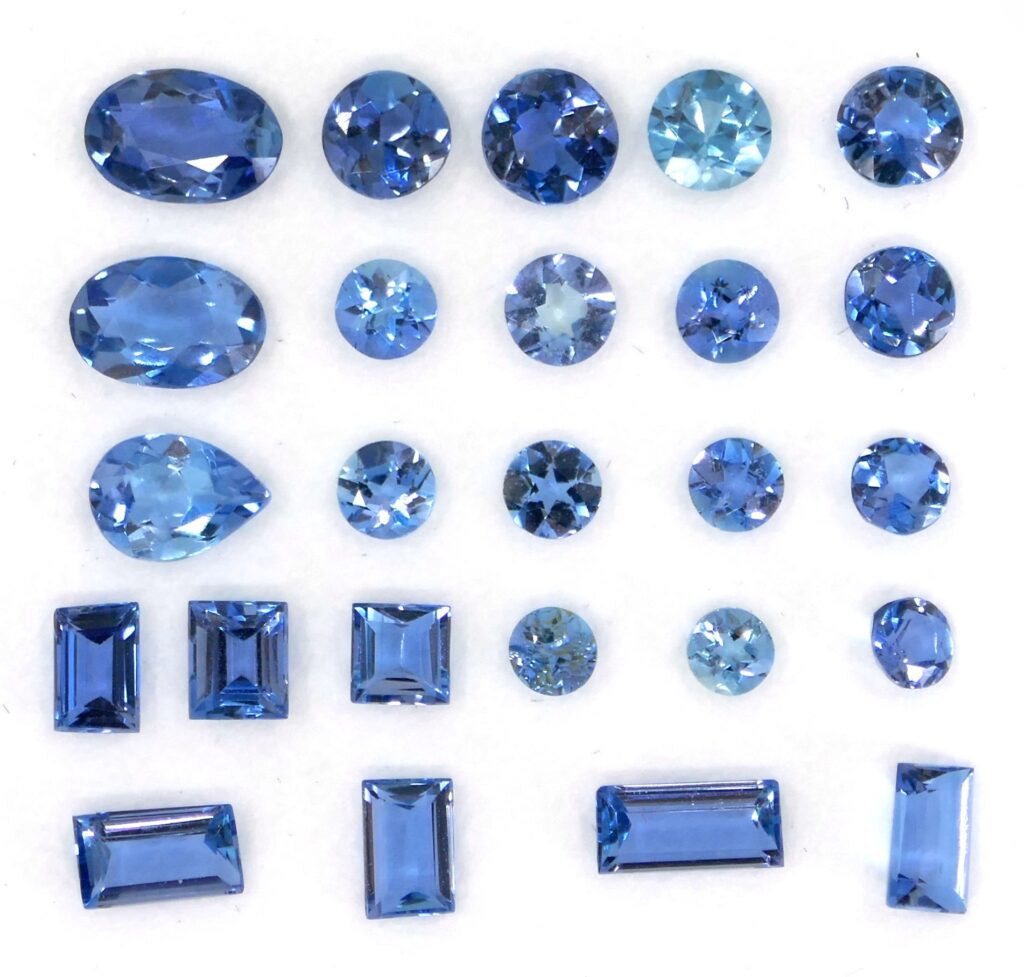
For me there is a type of comfort entering an office where there is the singing of laps, it means there is a high level of expertise there. Over the years I have learnt a lot about the incredible art of cutting and remain in awe of the people who do it. Every gem material has its challenges whether it is its hardness as in Diamond, inclusions to avoid/disguise in Emerald, inclusions essential to a type of effect as in Star Sapphires/Rubies and Catseyes, or cleavage in Topaz.
Rough
All cutting starts by sorting the rough, this is a highly skilled job and can be the difference between making or losing money. For example; Experienced Emerald rough dealers only have to look quickly at a lot of rough to tell whether someone has already purchased the finest pieces out of the lot.
With gemstones such as Amethyst the rough is then ‘clipped’ using ‘end pliers’. To the inexperienced eye this looks crude but it is one of the most skilled parts of cutting because the lot of rough can be ruined and a loss made at this point.

Preform
From here the rough is preformed and in workshops where valuable stones are cut the owner will sit with the cutter, watching and debating how to deal with a piece of rough and issues such as avoiding inclusions or making the most of the colour are decided between them. These relationships are maintained for many, many years. I have been in a dealer’s office where a very large piece of Chrysoberyl showing strong chatoyancy was being worked on. The dealer had paid great deal of money for it but no matter what they did they could not get a catseye out of it. Needless to say I left the office quickly!
Once the preform is completed, in places like Jaipur, the stone can be sent out for faceting and polishing because the size and the shape of the stone is already set and it will not lose much more weight therefore it cannot be swapped for a lesser quality stone.

The Cut
Understanding the different materials is always good as it avoids disappointment when you are unable to obtain an item you have potentially sold.

Octagons/Emerald cuts are always difficult because they reveal all the marks/inclusions in the stone due to the limited brilliance therefore they are always more expensive.
Ruby and Sapphire rough lends itself to oval shapes and therefore large rounds are more expensive.
Emeralds can be Princess Cut however the first set of facets below the girdle are at a very steep angle making them very hard to set without breaking them.
There are some stones where saturated colours are unavailable or very rare such as Aquamarine, Tanzanite and Peridot.

Whilst Ruby, Sapphire and Emerald can be found in saturated colours, you may find that small faults occur. In the cutting this is acceptable to save valuable weight but in other types such as Aquamarine, Tourmaline, Peridot, Tanzanite it is vital the cut is as perfect as possible.
There are many myths and tricks in this industry and I’m going to leave you a question to think about;
If a synthetic piece of Vernuel Sapphire or Ruby rough is cut to appear like a natural stone, it is said that the cutter must be in on the deception as he will be able to feel it as it cuts differently. Is this due to different directional hardness?
Cutters truly are some of the unsung heroes of our industry, they understand in huge depth the characteristics of gem materials and can make or break their appearance.
